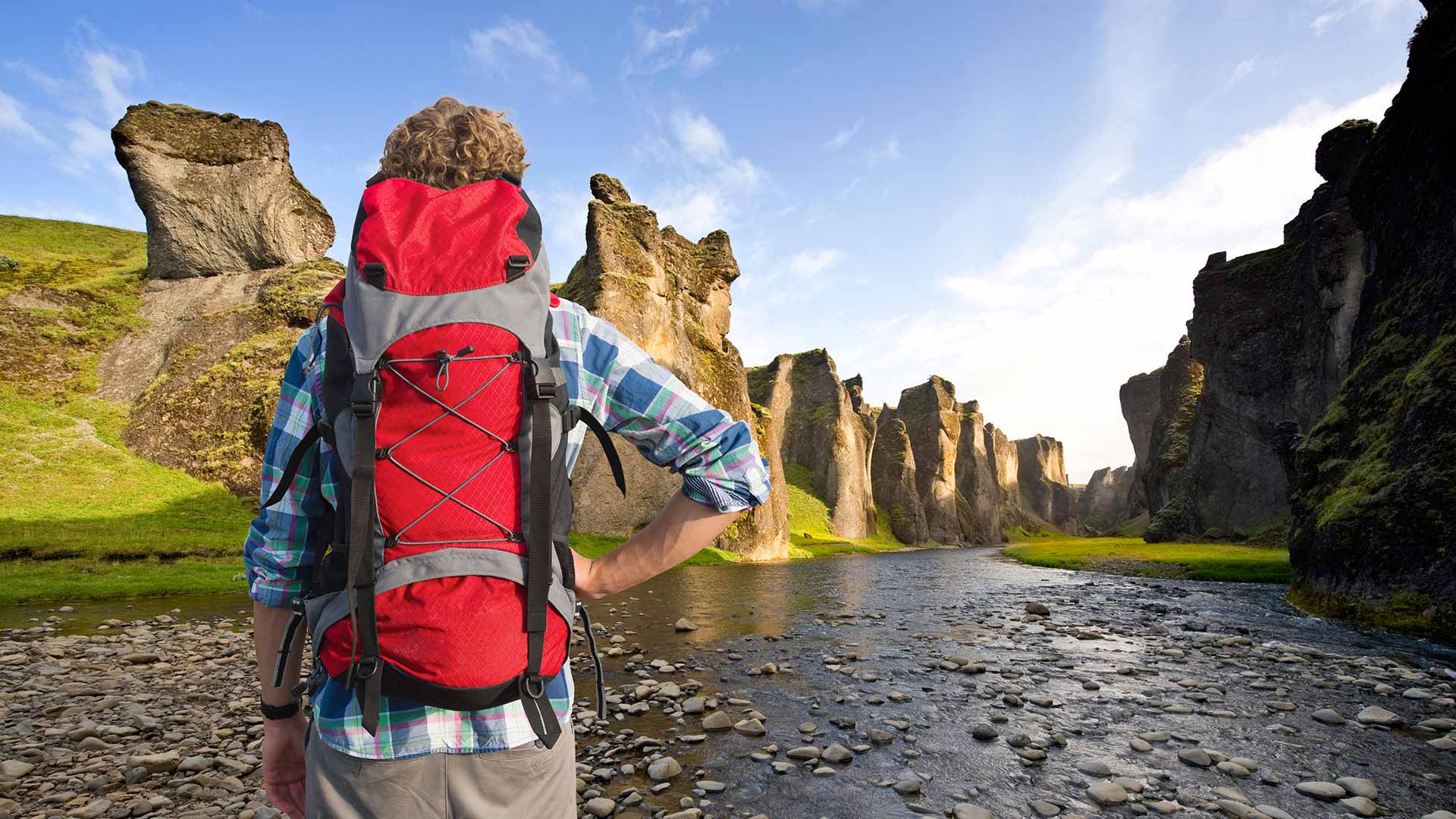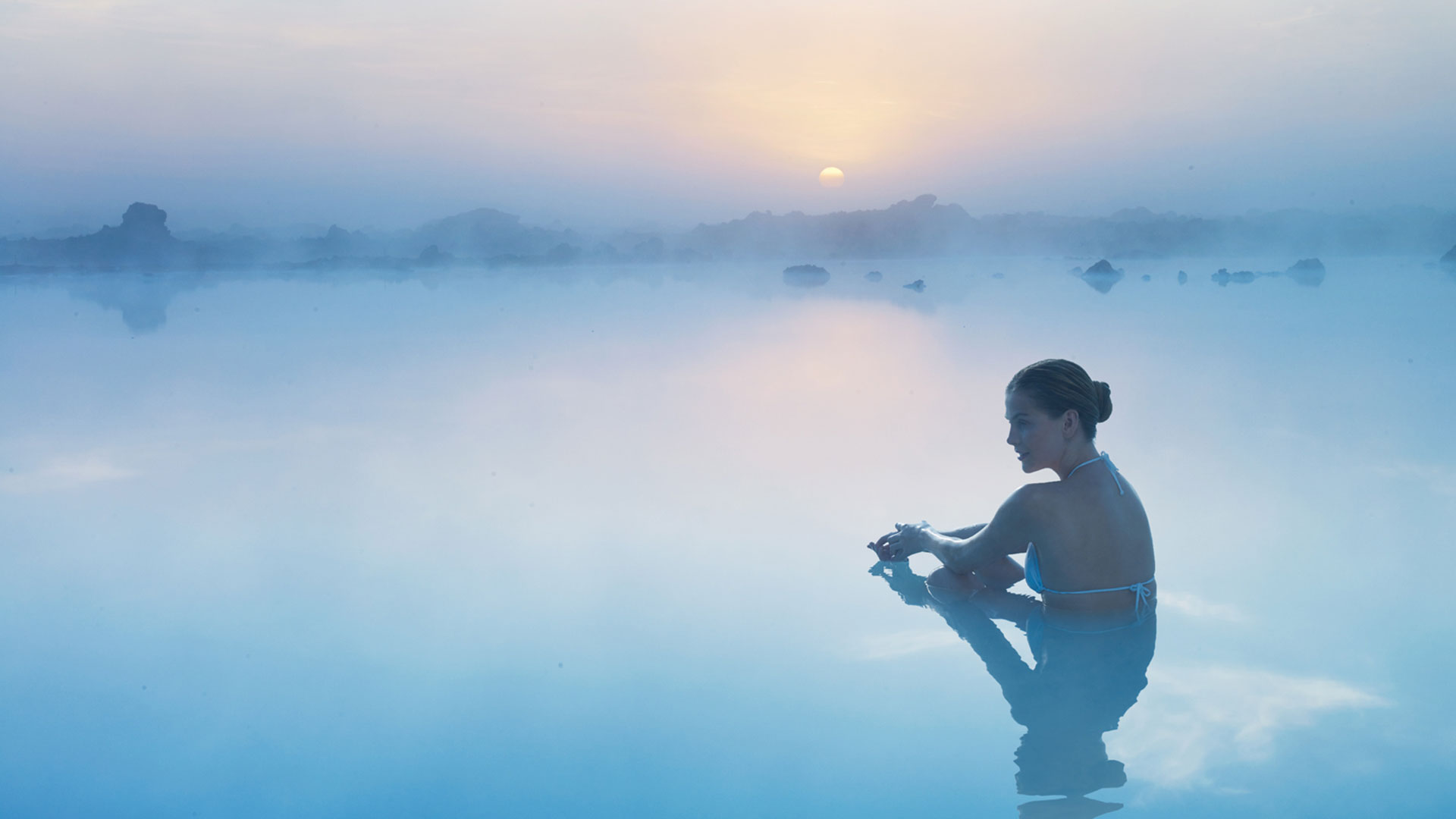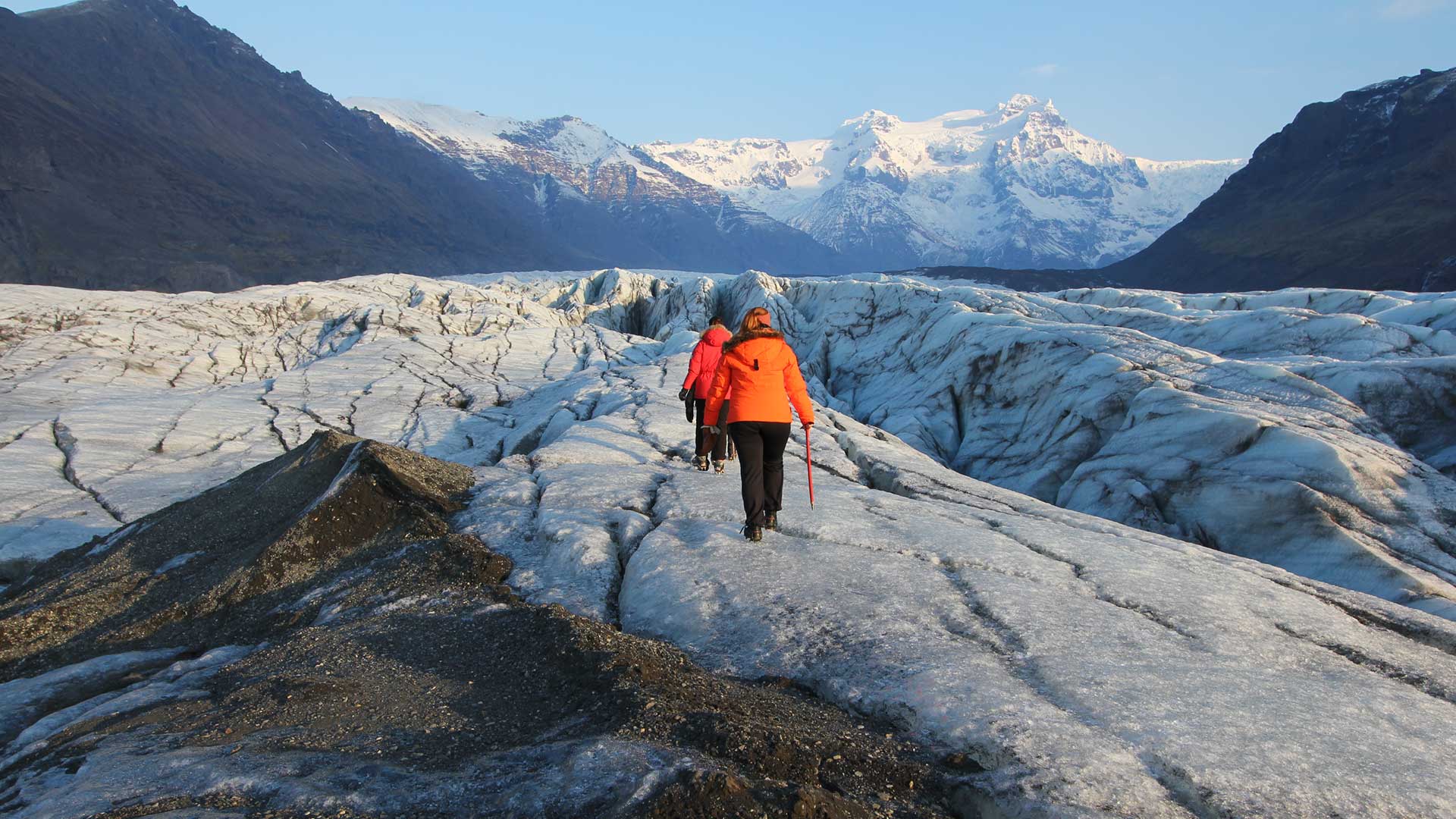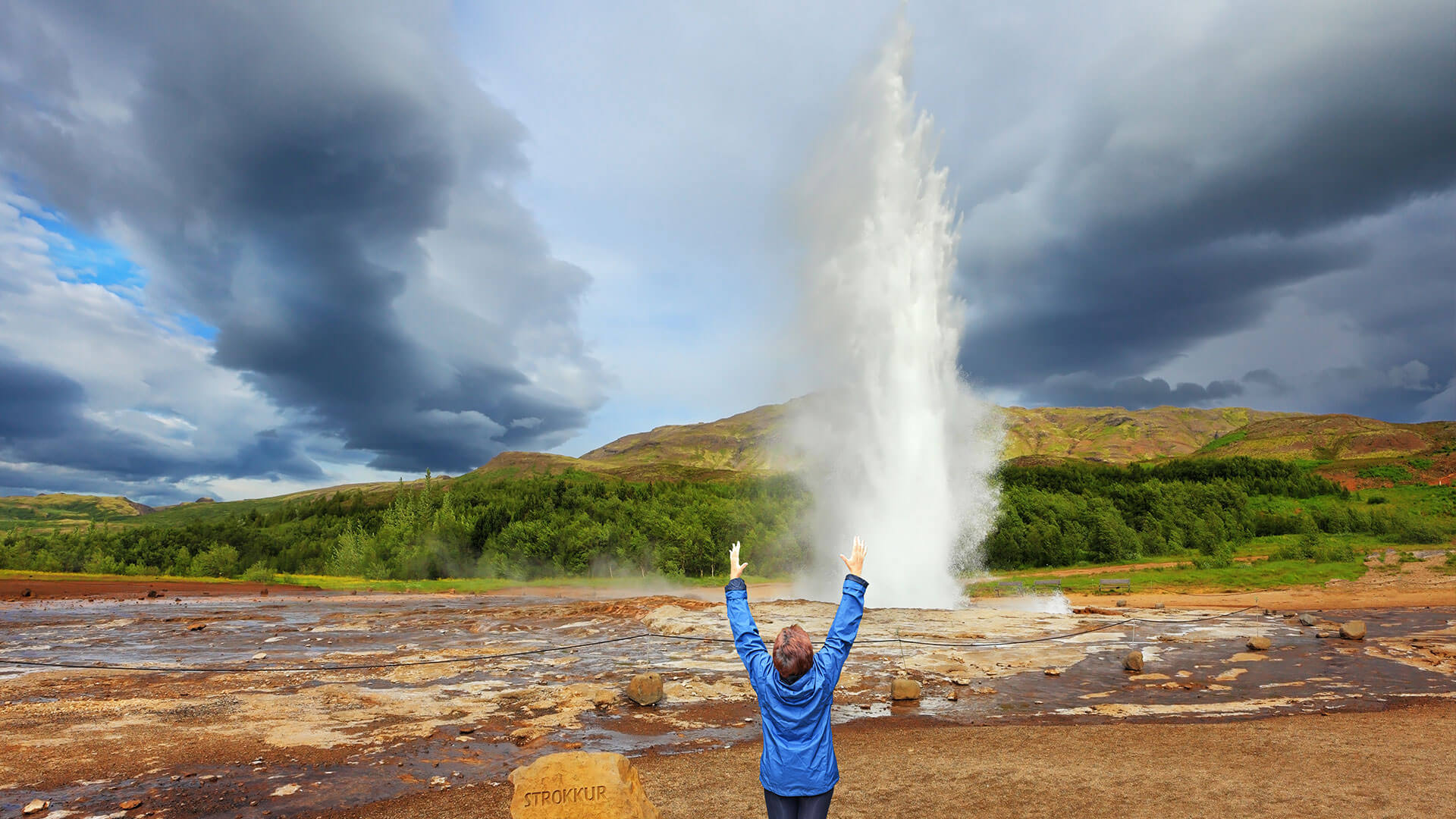You’ve booked your tour of Iceland, you know exactly where and what you’ll get to see. Then comes the time to fill your suitcase for this exciting adventure, but you don’t know what to pack for Iceland.
The weather in Iceland can be a mystery being as varied as its incredible landscape. That makes packing for a trip quite challenging.
Do you need shorts or a winter jacket for summer? Should you bring a swimsuit for a winter tour? Read on to find out what to wear in Iceland, depending on when you visit this beautiful country.
- Browse all Iceland travel packages to start planning your next adventure
Overview of the Icelandic weather
You may be wondering what the weather will be like when you visit. The truth is that in Iceland, whatever the time of the year, you can, and should, expect all seasons in one trip. Perhaps even in one day!
In summer, the weather in Iceland may be fresher than you expect. There will be possibilities of wind and rain, and maybe even snow if you come in spring or autumn. The most stable months are June, July and August when you might see heatwaves in the low to mid 20s°C (68-77°F).

Icelandic winters sit on the opposite end of the spectrum. But winter months may not be as "icy" as you may expect. The temperatures usually hover around 0°C (32°F), but you should be ready for snow and chilly winds.
There’s a saying about the conditions in Iceland that always rings true: “If you don‘t like the weather, wait 10 minutes.” For that reason, layers are your friend so you can adapt to what the Icelandic weather throws your way.
Pack smart to enjoy your trip to the fullest, come rain or shine. Read below to know what to pack and what to wear in Iceland for your upcoming trip.
What to wear in Iceland in summer
For a summer trip to Iceland (between May and September), it is a good idea to bring both light and warmer layers with you.
Light layers include t-shirts, thin long-sleeved shirts as well as shorts. For your warmer set, make sure to bring some trousers or jeans, and layers such as a fleece or thick jumper. This is especially true if you’re only bringing a light outer shell.
This outer shell should be waterproof and windproof if you want to be fully prepared. You could also bring an insulated winter jacket if you’re worried about being too cold.
Having both thin and warm layers available means that you can easily adapt to the varying weather of each day. When you’re out exploring, you can simply add or remove clothing depending on the conditions.
- Check out Iceland summer travel packages
- Learn more about the best things to do in Iceland in summer

For scenic walks on beaches, along cliffs or in national parks, you should wear some good hiking shoes or boots. Water-resistant boots are recommended throughout the year.
Additionally, in summer, some visitors find it difficult to sleep with the light of the midnight sun. This is a phenomenon where the sun doesn't set below the horizon. If you like to sleep in darkness, make sure to bring an eye mask.
Because of this ever-present light, it is also recommended to bring sunglasses and sunscreen.
It’s good to know that while there are few insects in Iceland, small midges do thrive in the summertime, especially by lakes and streams. If you’re planning on exploring the Lake Mývatn area especially, you should bring some insect repellent.
Finally, don’t forget your swimsuit, towel and flip flops to take dips in the various hot springs and swimming pools around the country.
- Check out midnight sun tours of Iceland
- Or explore self-drive packages to drive along the famous Ring Road
What to wear in Iceland in winter
When travelling to Iceland in winter, make sure you stay warm and dry. While temperatures do not often drop below freezing, an insulated jacket is recommended due to the cool northerly winds. Adding some good base layers will keep you even warmer.
Good sturdy boots will help you enjoy the rough terrain of the outdoors while keeping your toes happy. As sidewalks can get icy and slippery, you may also want to bring ice cleats, also called ice grips or anti-slip soles, to give your shoes better traction.
It’s good to know that some, but not all, outdoor excursions provide the necessary winter clothing, such as warm outer layers. To take part in these snowy excursions, such as snowmobiling and ice caving, bring winter trousers and snow boots.
- Visit Iceland in October, November, December, January, February, March, or April to experience a winter wonderland
- Read about the best ways to enjoy the snow in Iceland

Like in summer, we recommend bringing your swimming attire. The pools, hot springs, spas and hot tubs are all naturally heated and ready to warm you up after a day of snow activities.
On a winter road trip in Iceland, it’s easy to think you’ll be in the car keeping warm, but the Land of Fire and Ice is made for exploring. You won’t want to just see the stunning landscape from the window, but also smell, feel and discover it first-hand.
Go for a walk at the beach of Reynisfjara, wander around the spectacular Jökulsárlón glacier lagoon, and hop on a boat to go whale watching. All these tips will help you enjoy the beautiful sights without worrying about the temperatures.
- Pick your favourite winter tour of Iceland
- Get inspiration with these top 10 things to do in Iceland in winter
FAQs about what to wear in Iceland
For a quick overview of what you need to know about packing for Iceland, read the answers to your most frequently asked questions below.
1. What clothes do you need for Iceland?
As mentioned previously, whatever the season you’re travelling to Iceland, you’ll want to bring layers.
We’ve compiled a sample packing list of items you should bring with you regardless of the time of year you’re visiting Iceland:
- A fleece-lined or lightweight wool jumper
- A rainproof and windproof jacket
- Rainproof trousers
- Sturdy walking shoes with a good grip
- Gloves, scarves, and warm hat
- Thermal base layers, such as leggings and underwear (specifically for highland and winter travel)
- Waterproof hiking boots and wool socks (specifically for highland and winter travel)
We also recommend bringing a swimsuit and quick-dry towel for visiting hot springs or spas, such as the Blue Lagoon. These are accessible all year long.

2. What shoes should I wear in Iceland?
The shoes you wear will depend on what activities you want to do. But bring a good pair of walking shoes whatever the plan is. This way you could go for walks on the uneven terrain at beaches and in national parks, amongst other scenic locations.
If you plan to go hiking, you should bring good boots and gear. Waterproof boots are best to keep your feet warm and dry despite the weather.
In winter, come with the appropriate footwear to take on the snowy Icelandic landscape.
3. Do I need hiking boots for Iceland?
Yes, as mentioned above, you’ll want good waterproof hiking boots should you decide to go walking outside the city. If you don’t plan on going hiking, or taking on more adventurous pursuits, a pair of good walking shoes will do.
In winter, you could bring a pair of snow boots to be fully ready.
- Plan your trip to Iceland for May, June, July, August, or September to go hiking in the stunning landscape
- Or browse active tours of Iceland

4. Can you wear sneakers in Iceland?
Of course you can! They’ll come in handy, especially during the summer, for visiting Reykjavík and going into local bars and restaurants.
But we recommend wearing a pair of sturdy walking shoes with a good grip when you head into the countryside.
This is so you are ready for the rough terrain of Iceland’s natural landscape. This way you can go for scenic walks to admire volcanoes, waterfalls, beaches, and glaciers while staying dry and well-supported.
Even if you’re simply going on a day tour of the Golden Circle, you may find boots useful. There are rough, uneven paths along waterfalls and in the Þingvellir National Park.
5. What do you wear in Iceland to see the northern lights?
The best way to dress to go on an excursion to see the aurora borealis is to wrap up warmly.
Although the weather may hover just below freezing, it’s always colder at night. Especially if you’re standing waiting for the lights to appear. You’ll also find that the wind adds another chill factor, especially on the deck of a ship or by the coast.
Wrap up well with an insulated jacket, trousers, and good boots. You’ll want to wear a warm hat and scarf as well as gloves. Bring heat packs to keep your fingers warm and ready to press the shutter button to capture the northern lights.
- Look up northern lights packages in Iceland
- Learn about the best times and places to see the northern lights in Iceland

6. What should you not wear in Iceland?
You should not wear clothing and footwear that aren't appropriate for the local weather. Anything else is up to you!
If you travel to Iceland in summer, you might find a purpose for all kinds of clothes. If you're lucky enough to be visiting during a heatwave, you might wear shorts to go on day trips or walks.
A light jacket may be enough as well. You’ll even find use for your swimsuit. But it's best to pack all the essentials, so you're ready for anything.
In winter, you should wear insulating layers as well as waterproof and windproof shells. A pair of rain or even snow trousers will be useful to enjoy the great outdoors at this time of year.
7. Can you wear jeans in Iceland?
Yes, you can wear jeans in Iceland. The summer and shoulder seasons are especially good times to travel in your most comfortable pair.
If you plan to go on an adventurous excursion, we recommend wearing the appropriate, activewear clothing. It's a good idea to have a pair of pack-away rain trousers in your backpack to use if the conditions change.
In winter, if you plan to wear your trusty jeans, make sure to wear a pair of snow trousers on top to keep warm.
- Check out Iceland multi-day tours to enjoy a city break with excursions

8. What to wear in Iceland at night?
Depending on where you are in Iceland and when you visit, you’ll want to dress a bit warmer than during the day.
It’s true that in summer the nights are short. But maybe you’ll go out to explore in the early hours of the morning or late in the day when there are fewer people around. At these times, you’re likely to leave the shorts in your suitcase.
Instead wear a warm jacket and bring a hat, scarf and gloves just in case.
During the winter, we recommend wearing additional layers than during the day. That includes an extra fleece and thermal leggings to keep you warm.
9. Curious where the locals shop?
Icelandic apparel brand 66° North sells a wide selection of outerwear for all weather conditions in Iceland.
If you’re feeling cold or wet after arriving in the Northern Atlantic, you may want to visit their shops in Reykjavík. On top of being useful clothing for your travels, they will be a local Icelandic souvenir you can wear for a long time.
You should now be well-equipped with packing suggestions and list of what to wear in Iceland. So whenever you’re planning on visiting Iceland, you’ll be ready!
If you’re still looking to book your trip to Iceland, browse these tried-and-tested Iceland travel packages or get in touch with our Reykjavík-based travel experts.
With Nordic Visitor, you’ll get a dedicated travel consultant who will plan it all for you and give you personalised advice, including what to wear and pack.
